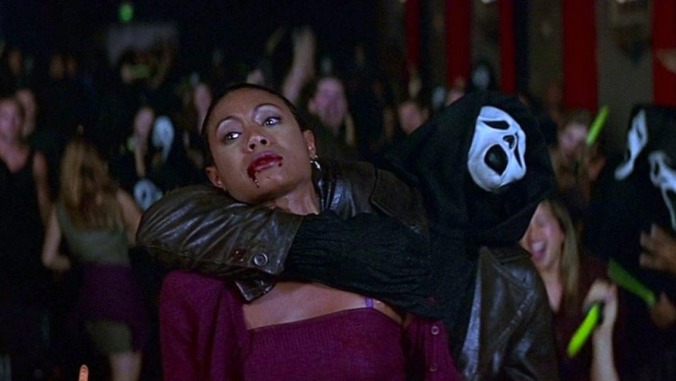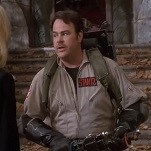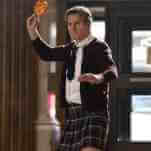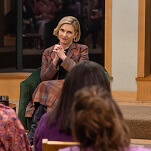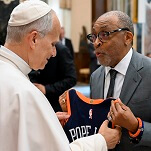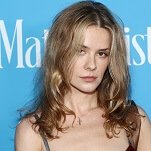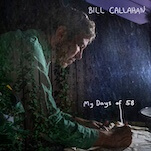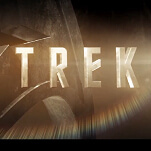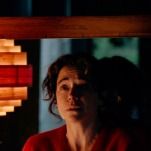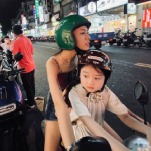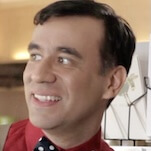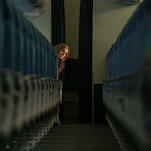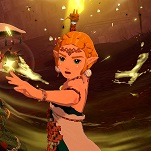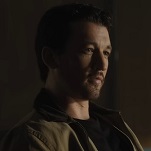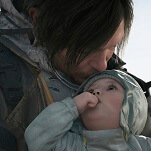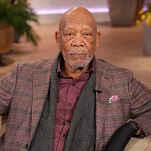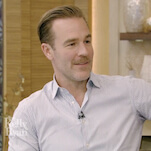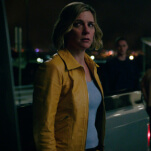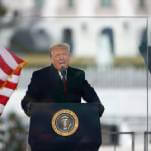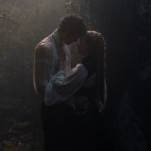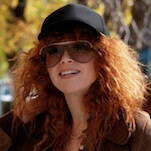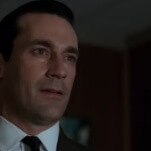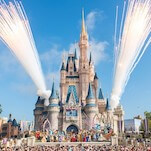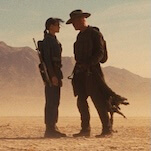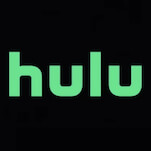Scream 2 Screenshot: Paramount Pictures/YouTube
Drew Barrymore may have put Scream’s diabolical mix of humor and horror on the map, but it’s Jada Pinkett-Smith’s wail in the first minutes of Scream 2 that arguably cements the genius of director Wes Craven and screenwriter Kevin Williamson. In fact, the opening to Scream 2 is one of the scariest things ever committed to the screen, with a vision of horror, spectacle, and indifference that’s as queasy as any slasher kill.
The scene deserves to sit alongside examples of discomfort that you’d find in artier films, like Pier Paolo Pasolini’s provocative critique of fascism Salo, Or The 120 Days Of Sodom or Michael Haneke’s gnarly riposte to a culture of entertainment built on suffering, Funny Games. And as audiences welcome Scream VI to theaters—the latest installment in the long-running franchise and a sequel many critics have hailed as one of the best and bloodiest of the Scream titles—it’s worth a look back at why the Scream 2 opener remains one of the defining moments in the series.
Cannily wrapped in a pop package, Scream 2 allowed Craven and Williamson to expand on the tropes and cliches that the horror genre uses to play with its audience. But it also gave them the opportunity to deepen their morbid cultural obsession with on-screen violence and its consequences. This was a thing for Craven particularly: he was both a target of conservative criticism and a filmmaker and thinker prone to breaking down the precarious nature of violence, art, and life. The opening to Scream’s 1997 sequel adroitly and concisely conveys those ideas, more so than the rest of the film. Why bother chattily theorizing about an audience’s appetite for on-screen violence when you can depict it, and its repercussions, with ruthless satire?
Let the meta-bloodletting begin
Taking place one year after the events of the first film, Scream 2 takes place in a world where Gale Weathers (Courtney Cox) has sold the film rights to her book, which has become the inspiration for a flashy, but probably garbage, slasher movie called Stab. But Craven and Williamson opening even more meta doors in the series isn’t the inherently interesting part: it’s the cultural landscape that is shaped by this fact.
Scream 2 begins with college students Maureen (Jada Pinkett-Smith) and Phil (Omar Epps) standing outside the theater showing Stab. Amongst the pointedly monochromatic crowd, Maureen notes the awareness of the racism and mistreatment of Black people in the horror genre (“I read my Entertainment Weekly; I know my shit!”). Once inside the theater, the theatricality of a slasher, and its function as audience catharsis, is pushed to the forefront, and the ripple effects of Gale’s book and subsequent film adaptation begin to betray the voraciousness of its audience.
The opening of Scream 2 is the only one in the franchise that does not feature a phone call from Ghostface to one of his victims, which gives the filmmakers an opportunity to flex their intellectual muscles. Instead, we get Ghostface—once again voiced by Roger L. Jackson—as a character in Stab, which suggests that his dialogue has left the realm of predator and prey and been blown up in scale to encompass the cinema and its audience.
The brilliance of this opening lies in the way that it paints an audience as so blinded by the need for spectacle, and so crippled by an inability to discern between reality and fiction, that the viewers have transformed into sycophants. After Ghostface slashes through Phil in the bathroom, he returns to his seat in the theater and attacks Maureen. The audience, buoyantly ready for the next thrill and sporting their own Ghostface masks, moves from an indifferent crowd to a voracious throng. This is fandom as nightmare. Death is bad enough, but a room of spectators drooling at the on-screen violence, only to realize too late that it’s happening for real, right in front of them? And that maybe the audience could be implicated in all of this? Now that’s scary.
The danger of bigger, bolder horror movie kills
As Ghostface goes in for the kill, the whites of Maureen’s eyes still pierce the relative darkness of the theater. Her scream doesn’t sound like the obvious and typical “blood curdling” bawls that you hear in most scary movies. There’s something desperate, sad and aching to it. There she is, bathed in lighting from the projector with the spectacle of death, violence and cinema all over this Black woman’s body, as a hush finally falls on the mostly white crowd. If Craven’s long held, furtive anxieties about the impact his work has on audiences shows up in the Scream movies, it never feels more blunt than it does here. Maybe there’s a degree to which it is the audience’s fault. Maybe spectatorship is deadly, not just on a film theory level, but on a more direct and literal one that exists in a mass media landscape that conditions consumers to want more, bigger, bolder, and crazier. What are the consequences of that?
But the most shocking thing about the scene is how it ends. In silence. Craven holds on Maureen’s collapsed corpse for five unbroken seconds. No shouts. No Marco Beltrami music. No cheers. Just the body. And the audience watching the audience watching how we’ve gotten away with murder.
